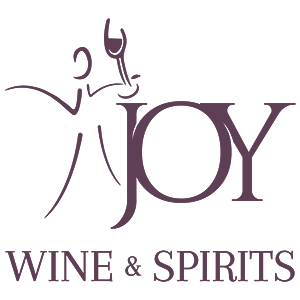
 I’ve been spending a good amount of time in Oregon wine country lately and I’ve found all kinds of great bottles. Some of the best values I’ve found come from producer Scott Paul’s second label WildStock. These wine’s normally retail for $20, but we’re offering the red as a club wine this month. As expected, the wine is made of Pinot Noir grapes but what’s unique is that they come from outside the Willamette Valley. Much of the fruit is sourced from Umpqua which is in the southern part of Oregon. This valley can create wines with bigger body than you might expect, but Scott Paul wine is picked a little earlier giving the wine freshness and vibrancy.
I’ve been spending a good amount of time in Oregon wine country lately and I’ve found all kinds of great bottles. Some of the best values I’ve found come from producer Scott Paul’s second label WildStock. These wine’s normally retail for $20, but we’re offering the red as a club wine this month. As expected, the wine is made of Pinot Noir grapes but what’s unique is that they come from outside the Willamette Valley. Much of the fruit is sourced from Umpqua which is in the southern part of Oregon. This valley can create wines with bigger body than you might expect, but Scott Paul wine is picked a little earlier giving the wine freshness and vibrancy.
We all love Pinot but it’s rare to ever find one under $20 that actually tastes like Pinot. What I mean is that most Pinot under 20 is often too ripe or too fruity for the lighter skin variety. A lot of Pinot in that price is blended with Syrah or manipulated with acidification or grape extracts. WildStock doesn’t have these issues. It tastes natural and it’s got everything a good Pinot should have. Except the high price tag.




 The Loire Valley of France is home to some of best white wines in the world. Sancerre, Vouvray, Pouilly-Fumé, Cour-Cheverny, Muscadet sevre et Maine… All classics from a wide range of terroirs, styles, and grapes. This month’s wine is an amalgam of what Loire has to offer being a blend of the three main grapes of the region: 50% Melon de Bourgogne, 30% Chardonnay, and 20% Sauvignon Blanc.
The Loire Valley of France is home to some of best white wines in the world. Sancerre, Vouvray, Pouilly-Fumé, Cour-Cheverny, Muscadet sevre et Maine… All classics from a wide range of terroirs, styles, and grapes. This month’s wine is an amalgam of what Loire has to offer being a blend of the three main grapes of the region: 50% Melon de Bourgogne, 30% Chardonnay, and 20% Sauvignon Blanc. Domaine de Montfaucon is a famous and historic producer in the Rhone village of Lirac. They of course make some amazing bottles of Lirac, Chateauneuf du Pape, and others, but you are unlikely to find a more fresh, approachable bottling than the “Les Gardettes”. Technically a table wine, this red contains a mix of Grenache, Cinsault, Carignan and Syrah and is maybe “less serious” than there Cote-du-Rhone wine. However, it makes up for this with a fresh, aromatic brightness that pairs great with almost any food (even spicy!). You’ll also notice a peppery, gamey note on the nose which indicates the importance of syrah in the blend.
Domaine de Montfaucon is a famous and historic producer in the Rhone village of Lirac. They of course make some amazing bottles of Lirac, Chateauneuf du Pape, and others, but you are unlikely to find a more fresh, approachable bottling than the “Les Gardettes”. Technically a table wine, this red contains a mix of Grenache, Cinsault, Carignan and Syrah and is maybe “less serious” than there Cote-du-Rhone wine. However, it makes up for this with a fresh, aromatic brightness that pairs great with almost any food (even spicy!). You’ll also notice a peppery, gamey note on the nose which indicates the importance of syrah in the blend.


